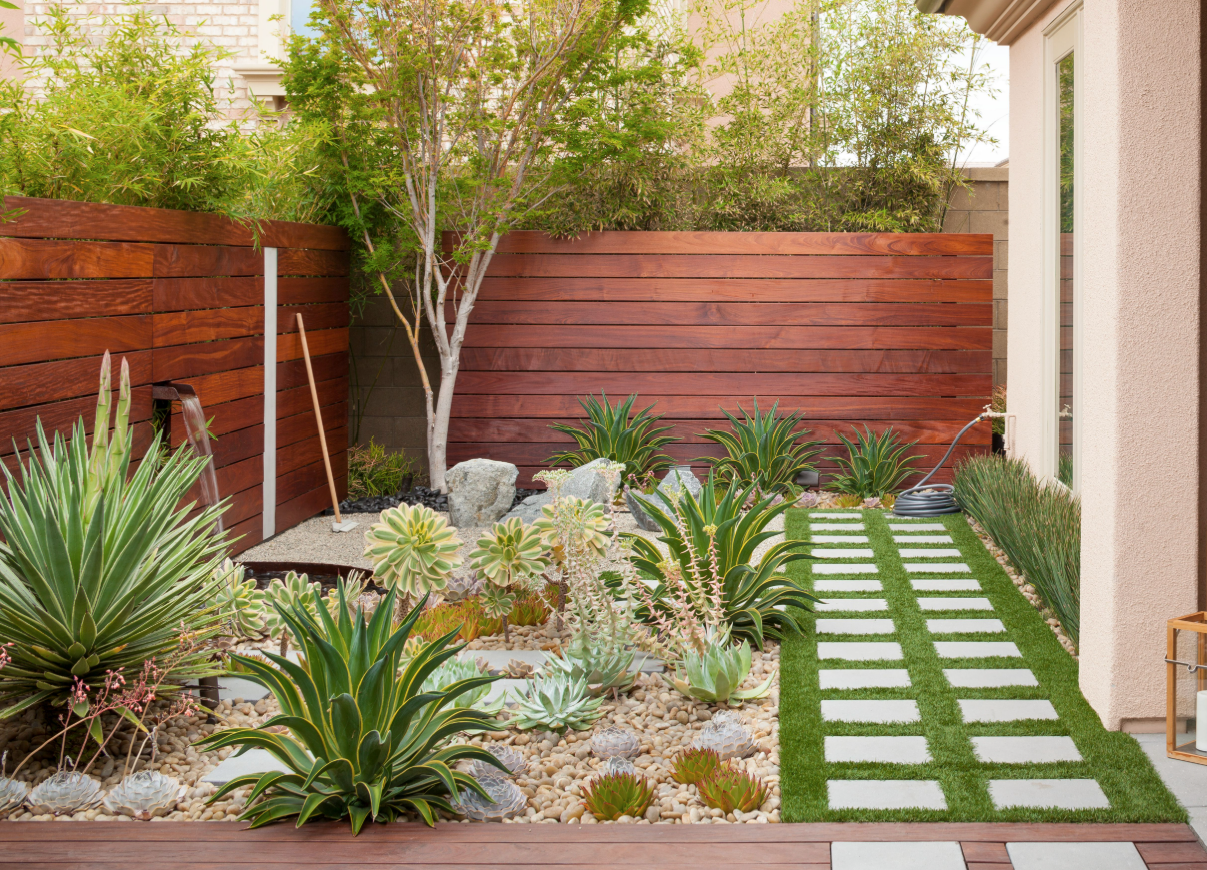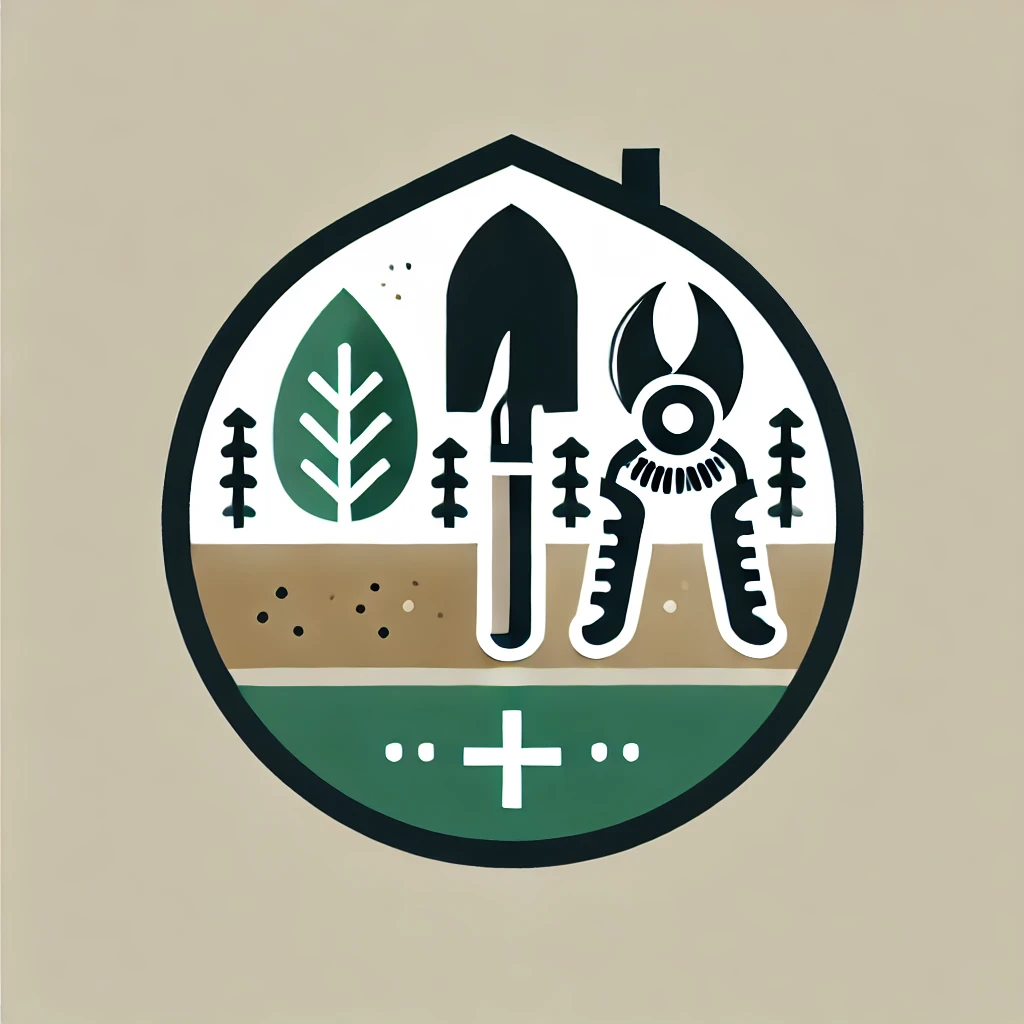Understanding Your Dog's Needs
Before you start redesigning your backyard, take some time to observe your dog's behavior in the current space. Watch how they interact with different areas, where they like to rest, and what catches their interest.
This observation period will give you valuable insights into your dog's preferences and habits, which you can then incorporate into your garden design.
For instance, if your dog loves to patrol the fence line, you might consider creating a dedicated path along the perimeter. If they're always seeking out shady spots on hot days, prioritize adding more shade structures or dense foliage areas.
Safety First: Creating a Toxic-Free Environment
The cornerstone of any dog-friendly garden is safety. Many common garden plants can be harmful or even fatal if ingested by dogs.
Creating a toxic-free environment needs careful plant selection and strategic placement.
Dog-Safe alternatives
Popular garden plants to avoid
When in doubt about a plant's safety, always talk to a veterinarian or reputable plant database before adding it to your garden.
Designing Activity Zones
Creating distinct areas for different activities helps manage your dog's behavior and protects your plants. Here's how to set up key zones in your dog-friendly garden:
Digging Zone
Many dogs have a natural instinct to dig. Rather than fighting this behavior, channel it into an appropriate area.
Create a designated digging pit filled with sand or loose soil.
Bury toys or treats in this area to encourage your dog to dig there instead of in your flower beds.
To make the digging zone even more appealing, consider adding some dog-safe plants around the edges, like ornamental grasses or sturdy shrubs that can withstand some rough play.
Potty Area
Training your dog to use a specific area for their business makes garden maintenance much easier. Choose a spot that's easily accessible but somewhat removed from high-traffic areas.
Gravel or mulch works well as a base, as it's easy to clean and doesn't keep odors like grass does.
Add a marking post or decorative fire hydrant to this area to encourage your dog to use it. Regular cleaning and occasional enzyme treatments will keep the area hygienic and odor-free.
Play Area
Dedicate an open space for running, fetching, and general play. This could be a simple lawn area or something more elaborate like a doggy obstacle course.
Ensure the ground cover in this area is durable and can withstand heavy traffic.
Consider adding some interactive elements to this zone, such as:
- A sturdy rope toy tied to a tree branch
- A shallow wading pool for hot days
- A selection of durable chew toys
Rest Area
Dogs need a comfortable spot to relax and cool off, especially after active play. Create a shaded area with soft ground cover where your dog can rest.
This could be under a tree, a pergola, or a purpose-built dog house.
In hot climates, consider adding a cooling station. This could be as simple as a raised bed in a shaded area or as elaborate as a misting system that activates on particularly warm days.
Creating Dog-Friendly Pathways
Well-defined paths serve many purposes in a dog-friendly garden. They guide your dog's movement through the space, protect sensitive plants, and provide a comfortable surface for paws.
When choosing materials for your paths, prioritize comfort and safety. Some good options include:

Avoid materials that can get too hot in the sun or that might hurt your dog's paws, such as rough gravel or certain types of wood that splinter easily.
Secure Fencing and Boundaries
A secure perimeter is crucial for keeping your dog safe within the garden. Your fence should be high enough to prevent jumping and extend below ground level to deter digging.
If your dog is prone to barking at passersby, consider adding some visual barriers along the fence line. This could be dense shrubs, bamboo screens, or even a living wall of climbing plants.
For dogs that like to patrol the perimeter, create a dedicated path along the fence line. This gives them a sense of purpose and can reduce compulsive behaviors.
Water Features for Cooling and Play
Many dogs love water, and a water feature can be a great addition to your garden. Options range from simple to elaborate:

Choosing and Protecting Plants
When selecting plants for your dog-friendly garden, look for sturdy varieties that can withstand some rough play. Good options include:
- Ornamental grasses
- Hardy shrubs like barberry or viburnum
- Tough perennials like coneflowers or black-eyed susans
For more delicate plants, use raised beds or container gardens to keep them out of reach. You can also create natural barriers using dense plantings or strategically placed rocks.
Natural Pest Control Methods
Chemical pesticides can be harmful to dogs, so opt for natural pest control methods instead. Some effective strategies include:
- Companion planting: Plant pest-repelling species next to vulnerable ones
- Encouraging useful insects like ladybugs and praying mantises
- Using physical barriers like copper tape to deter slugs and snails
- Making homemade, pet-safe pest sprays using ingredients like neem oil or garlic
Enrichment Activities for Mental Stimulation
A stimulating environment keeps your dog mentally engaged and can prevent destructive behaviors. Here are some ideas for adding enrichment to your garden:
- Create scent trails using dog-safe herbs or essential oils
- Set up a simple agility course with jumps, tunnels, and weave poles
- Hide treats or toys around the garden for your dog to find
- Install a puzzle feeder or treat-dispensing toy in a dedicated area
Rotate these activities regularly to keep your dog interested and engaged.
Low-Maintenance Design Considerations
A dog-friendly garden should be enjoyable for you too, not a constant source of work. Here are some tips for keeping maintenance manageable:
- Choose drought-tolerant plants to reduce watering needs
- Use mulch to suppress weeds and keep soil moisture
- Install an efficient irrigation system (Take a look at our review of Vatony Irrigation System)
- Opt for hardscaping in high-traffic areas to reduce mud and wear on grass
Adapting to Seasonal Changes
Your dog's needs will change with the seasons, so design your garden with year-round use in mind:
- In summer, focus on providing shade and cooling options
- In winter, confirm there are sheltered spots where your dog can still enjoy the outdoors
- Consider planting evergreen shrubs for year-round interest and shelter
- Add lighting for safe evening use during shorter winter days
Common Issues to Avoid
When creating your dog-friendly garden, be aware of these potential pitfalls, problems, issues, problems, issues:
Toxic Mulch
Some types of mulch, particularly cocoa bean mulch, can be toxic if ingested by dogs. Stick to pet-safe options like bark chips or straw.
Neglecting Cleanup
Regular waste removal is crucial for maintaining a healthy garden environment. Set up a convenient system for daily cleanup, and consider installing a pet waste composter.
Ignoring Vertical Space
Remember that some dogs can jump surprisingly high. Ensure any toxic plants are well out of reach, even for the most athletic dogs.
Chemical Fertilizers
Opt for organic, pet-safe fertilizers to avoid potential poisoning. Many natural choices, like compost tea or bone meal, are safe for dogs and useful for plants.
Allergenic Plants
Just like humans, dogs can have allergies. Be aware of plants that might trigger allergies in your dog, such as certain grasses or ragweed.
People Also Asked
What plants are safe for dogs in a backyard?
Many common garden plants are safe for dogs, including sunflowers, marigolds, petunias, and snapdragons. Always research a plant's safety before adding it to your dog-friendly garden.
How do I stop my dog from digging up my garden?
Creating a designated digging area and redirecting your dog's digging behavior there can help protect your garden. Consistent training and providing choice forms of mental stimulation are also effective.
What is the best ground cover for dogs?
Durable options like clover, buffalo grass, or artificial turf can withstand heavy dog traffic. For paths, consider smooth pebbles or bark chips that are gentle on paws.
How can I create shade in my dog's outdoor area?
You can create shade using natural elements like trees or tall shrubs, or add structures like pergolas, shade sails, or a doghouse. Ensure there are many shady spots for your dog to choose from.
Is artificial grass safe for dogs?
Quality artificial grass can be a safe and low-maintenance option for dogs. Look for products specifically designed for pet use, which are typically more durable and have better drainage.
How do I create a dog potty area in my yard?
Choose a designated spot away from high-traffic areas. Use materials like gravel or mulch that are easy to clean and don't keep odors.
Adding a marking post can encourage your dog to use the area.
What type of fencing is best to keep dogs in the yard?
The best fencing depends on your dog's size and behavior. Generally, a 6-foot solid fence that extends a few inches underground can contain most dogs.
For determined diggers or jumpers, you might need extra measures.
How can I make my backyard more interesting for my dog?
Add variety with different textures, levels, and interactive elements. Consider creating an obstacle course, adding a digging pit, or installing a puzzle feeder.
Regularly rotating toys and activities can keep your dog engaged.
Key Takeaways
- Prioritize safety by choosing non-toxic plants and creating secure boundaries
- Design distinct zones for different activities like digging, playing, and resting
- Use durable, paw-friendly materials for paths and high-traffic areas
- Incorporate enrichment activities to provide mental stimulation
- Adapt your garden design to your dog's specific needs and behaviors
- Balance your dog's needs with low-maintenance design for your enjoyment
- Regularly observe and adjust your garden to confirm it stays a safe and engaging space for your dog
